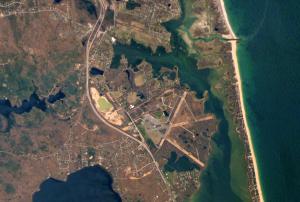
Public Stargazing
- Where:
- Frosty Drew Observatory
- When:
- Friday April 3, 2015 at 7:00 p.m.
- Cost:
- $1 Suggested Donation per Person
Tonight's forecast is calling for clouds, heavy rain, fog, and thunderstorms. This is quite unfortunate since, just before sunrise tomorrow morning, the third total lunar eclipse of the current lunar tetrad is taking place. This will also make it the third lunar eclipse of the tetrad that we will miss due to weather in New England, further substantiating the rule that New England, clouds, and awesome celestial events are inseparable. Overall, the bright full Moon would have made for poor viewing conditions anyway. Aside from the prospects of a lunar eclipse, tonight would not have been a great night for viewing.
We plan to open the Sky Theatre and Observatory from 7:00 p.m. – 9:00 p.m. In the Sky Theatre we will show a slide show of astrophotos shot at Frosty Drew Observatory while hosting an open discussion and commentary on general astronomy. The Observatory will be open for tours of our equipment, which is difficult to see in the dark on regular stargazing nights. These are the nights to get into a discussion with our astronomers about what we do and why space and science is all the rage these days.
Though weather will be dramatically dismal, the Sky Theatre will be warm and dry. Stop in and catch a quick astro-fix to hold you over during the early Spring New England weather. Then gear up for some excellent stargazing opportunities as the Moon begins to wane on Sunday, slowly bringing back the stunning starscape to dazzle all.
-------------------------------------------------------------------------
Weekly Happenings
Scott MacNeill
Starting last night (April 2, 2015), the International Space Station (ISS) has moved back into a position where nightly passes over New England are visible. Nightly visibility will continue for the next 20 days with some fantastic sighting opportunities. The reason we see the ISS at night in periods instead of all the time is because the ISS orbits Earth every 93 minutes at a 51.6° tilt to Earth's equator. For residents of the ISS, this brings sunrise and sunset every 45 minutes and allows for many fantastic views and photos of different regions of Earth (like the photo to your left of Ninigret Park, home to Frosty Drew Observatory). For Earth bound viewers, it means the ISS will appear in different parts of the sky and appear to move in different directions at different times of the night. The Frosty Drew Observatory website will publish daily ISS passes that are valid for most of the Northeast USA. Otherwise, check out NASA's Spot the Station app for pass schedules for any location. Make a note to get out over the next few weeks and check out the ISS passing over and get inspired about the fabulous science taking place on humanity's continually inhabited space destination. Learn a bit about the ISS.
Tomorrow morning (Saturday April 4, 2015), the third total lunar eclipse of the current lunar tetrad (four total lunar eclipses in a row) will take place. And as usual, New England will have clouds, rain, and the worst possible viewing conditions, just like the last two lunar eclipses of the tetrad. If you have relatively clear skies, the eclipse starts happening at 5:01 a.m. EDT when the Moon begins to pass into the penumbra, which is Earth's secondary shadow. At 6:15 a.m. EDT, the Moon drops into the umbra, Earth's primary shadow, at which point the eclipse will become strikingly visible. The total eclipse begins at 7:58 a.m. EDT and will last only 4.5 minutes! This happens significantly after sunrise for all of us on the east coast, though this will be the shortest total lunar eclipse of the 21st century. If clouds stay on track and attack our views, kick in our backup plan and catch the view live, compliments of the Slooh Community Observatory at. Happy eclipse hunting!
-Scott


